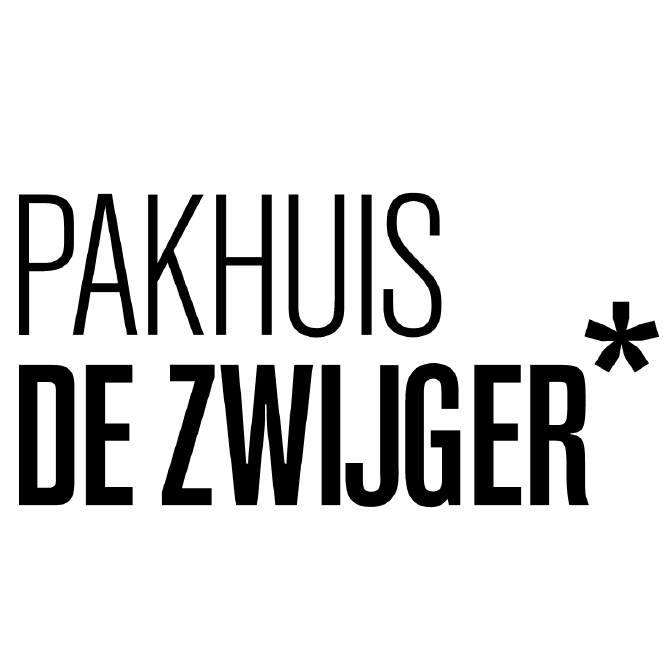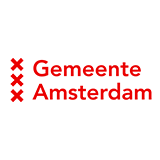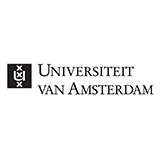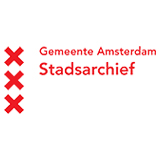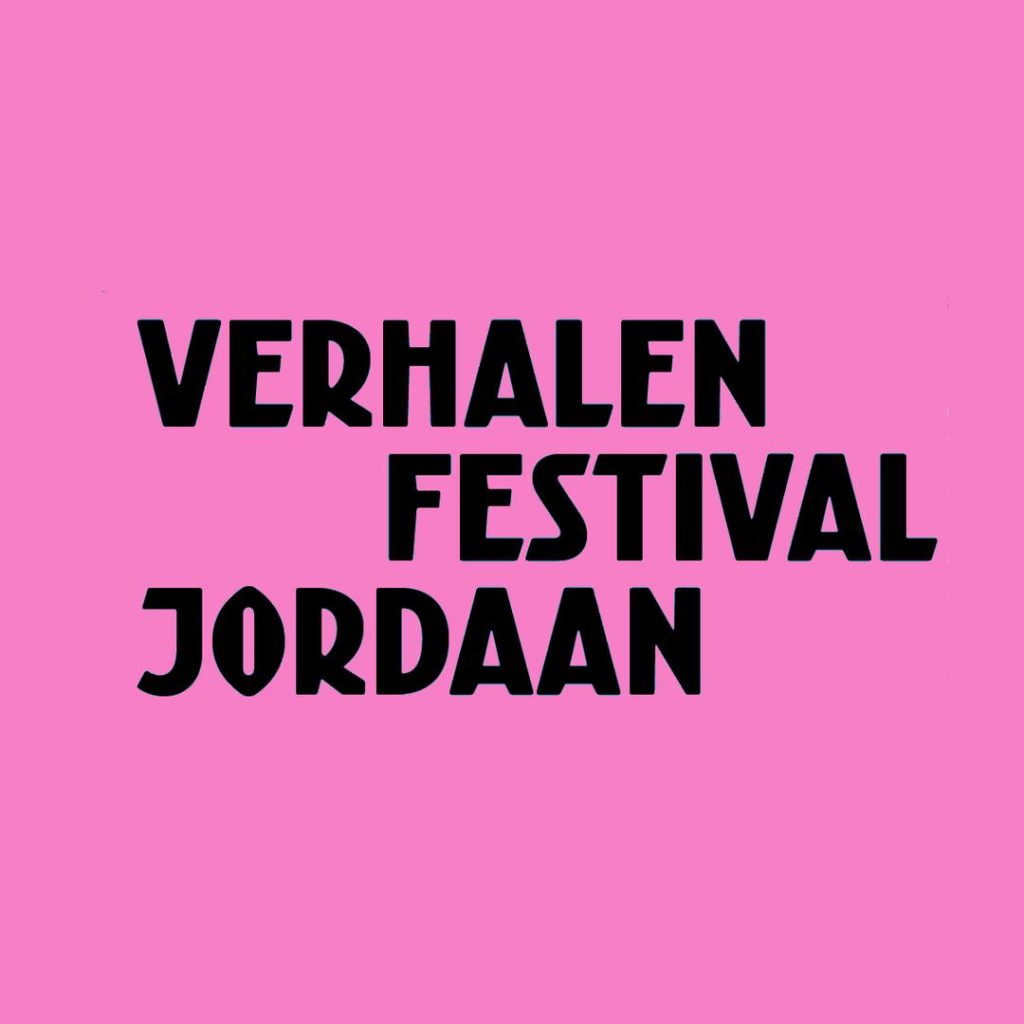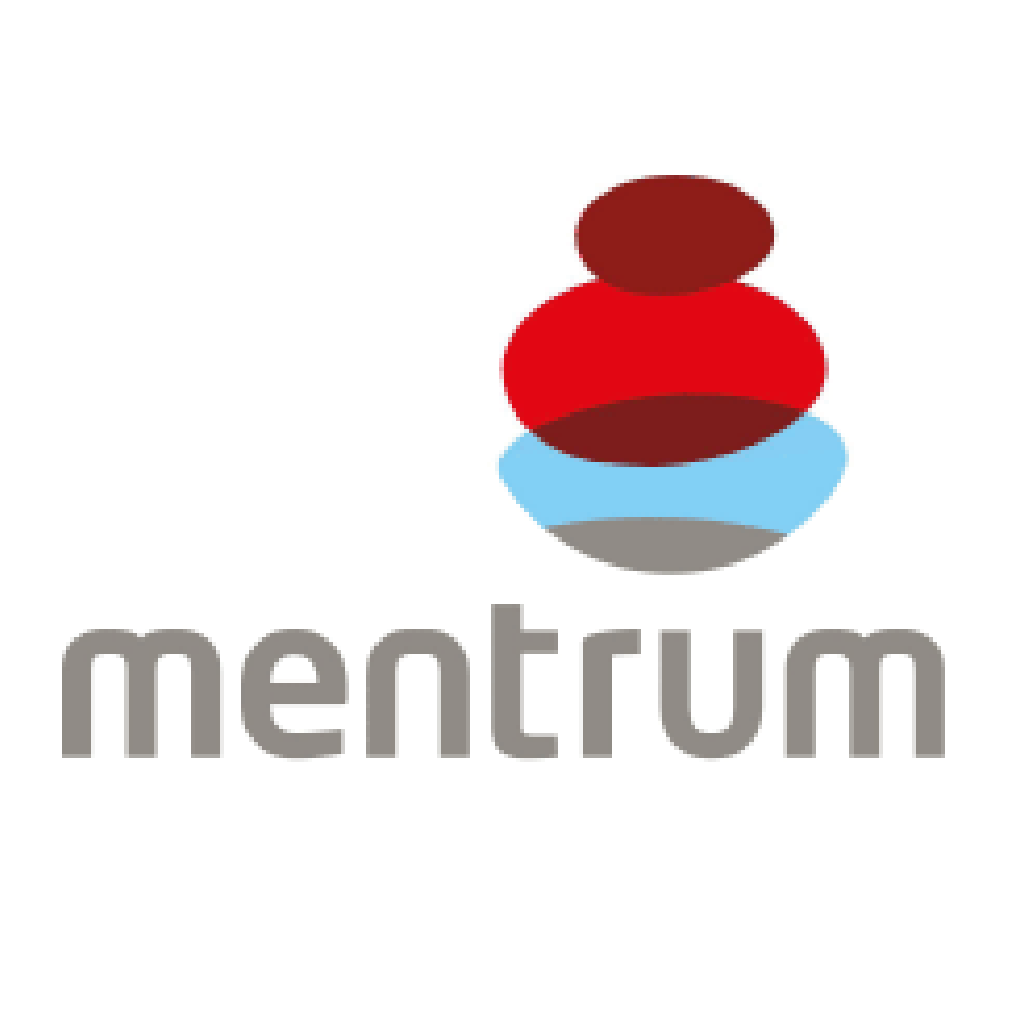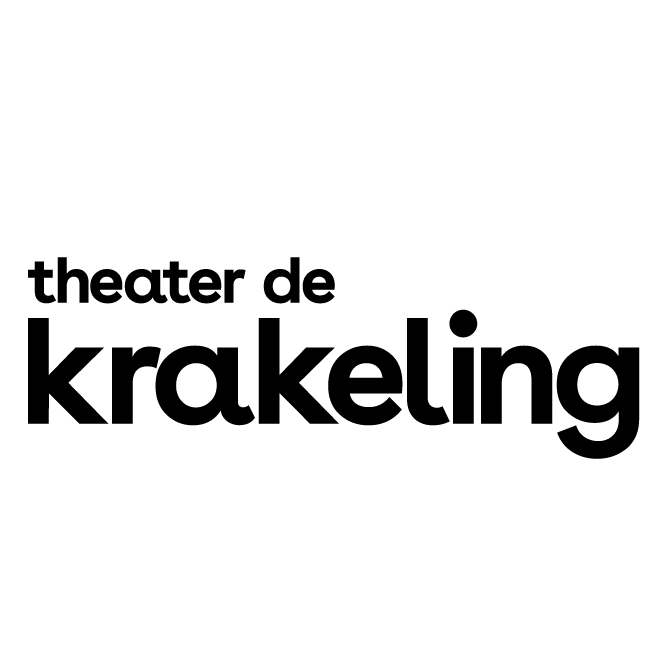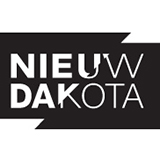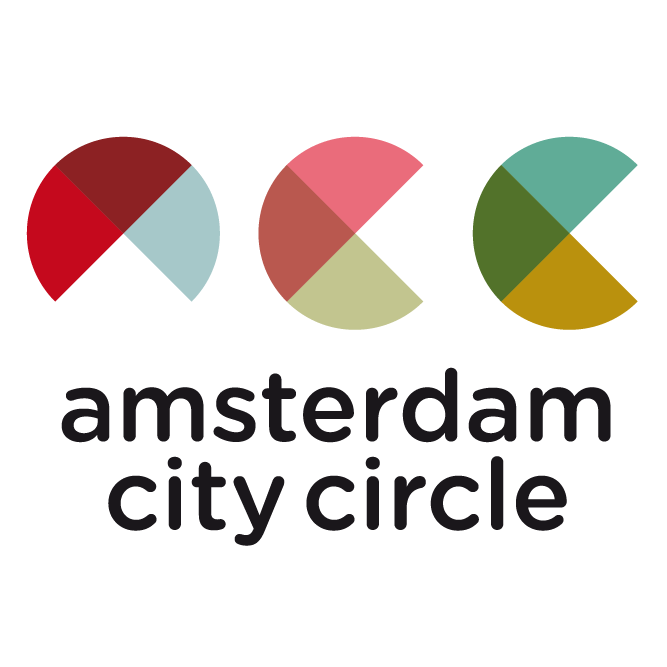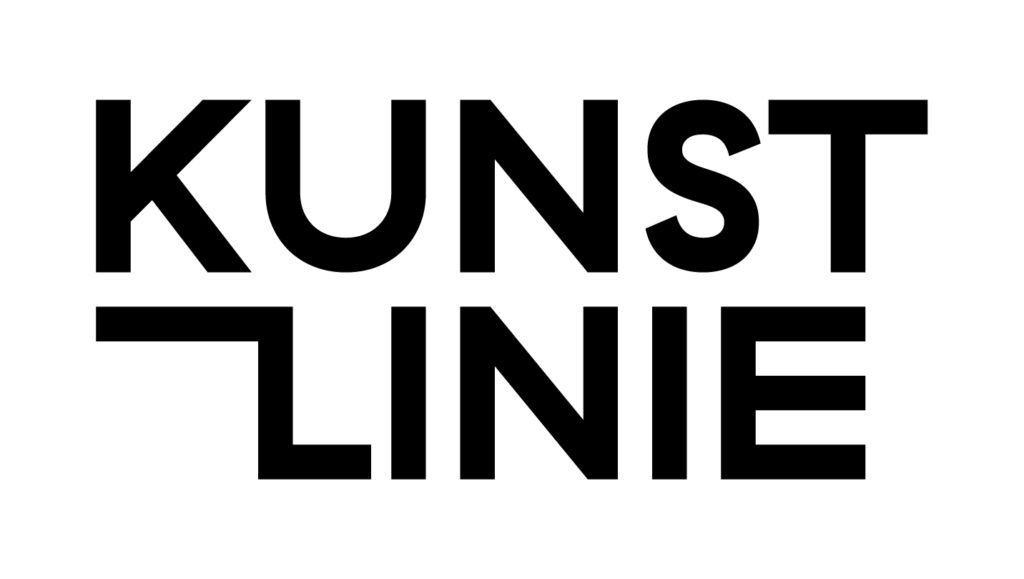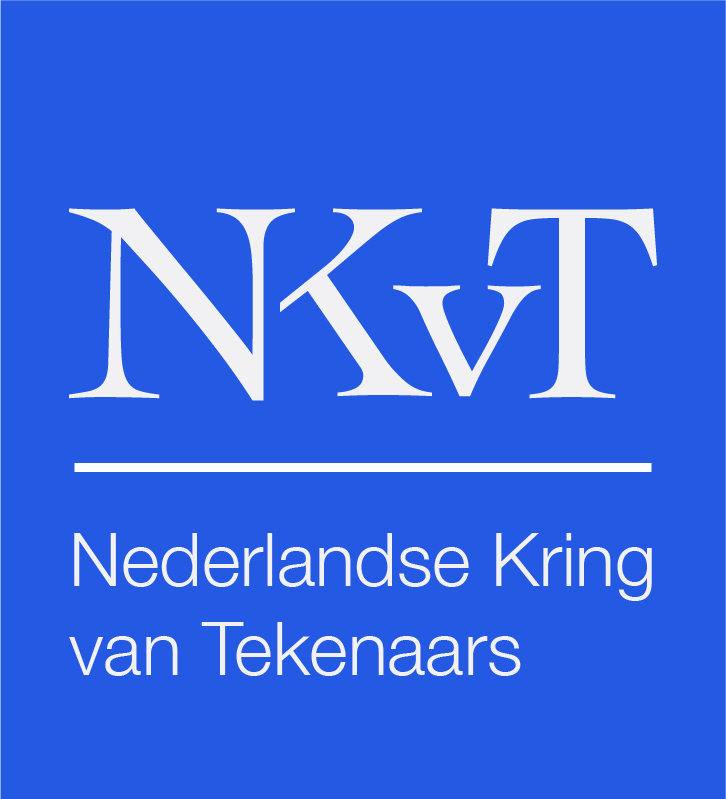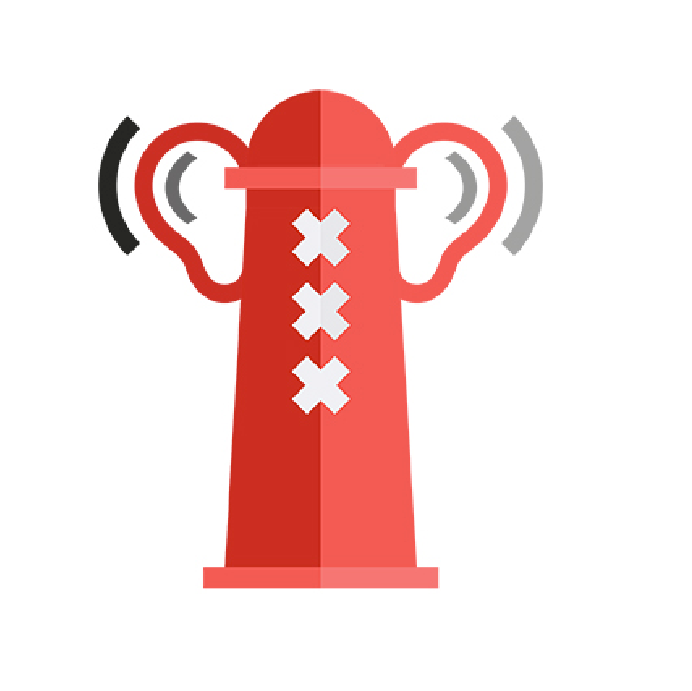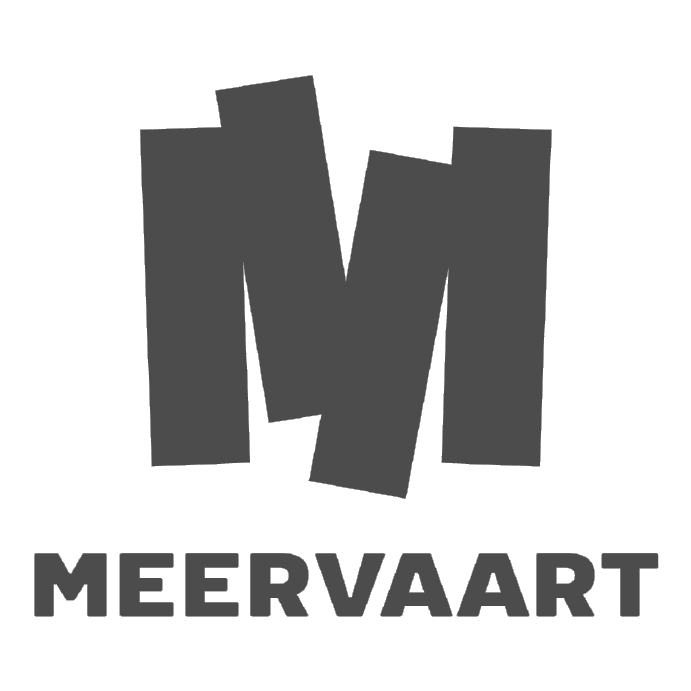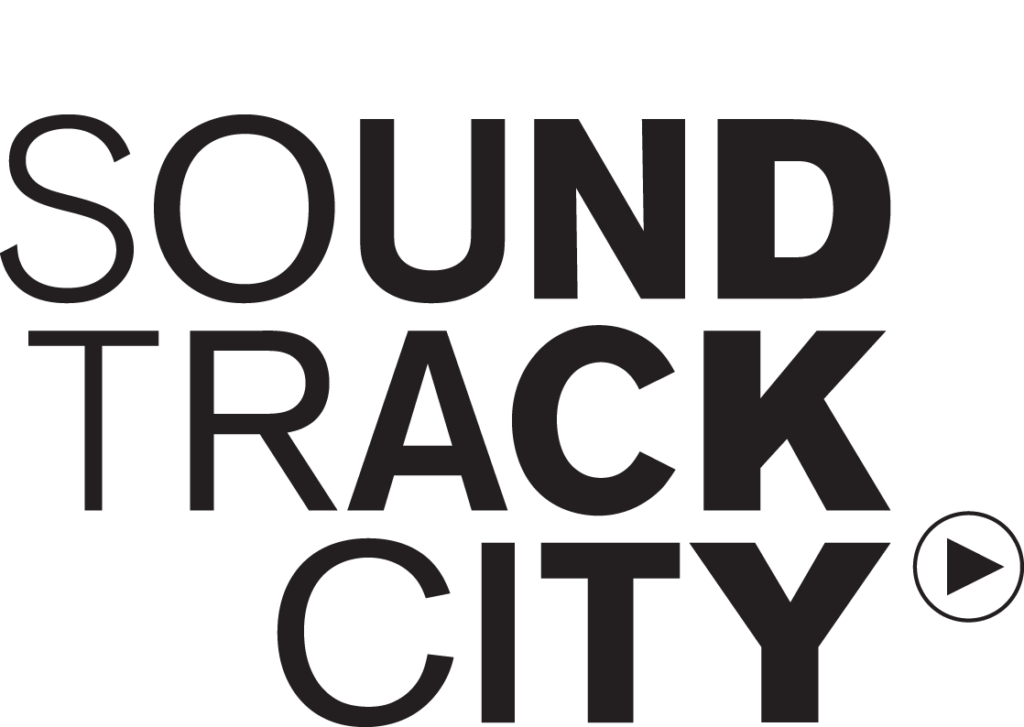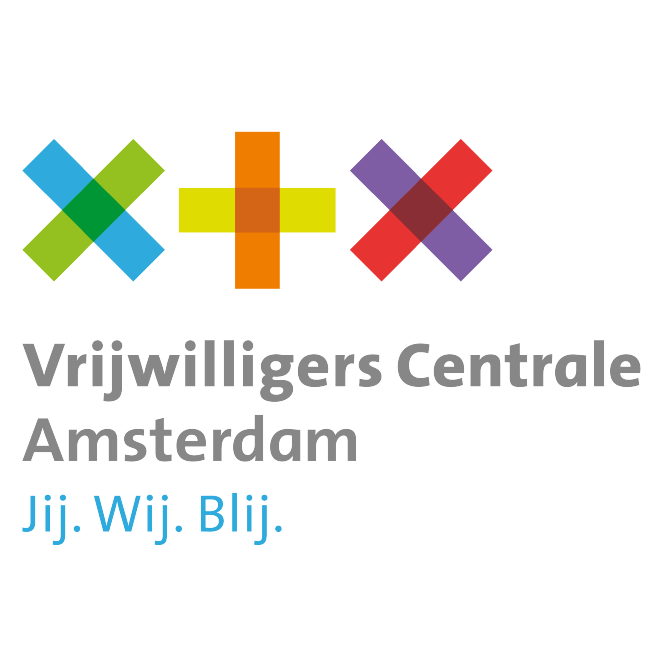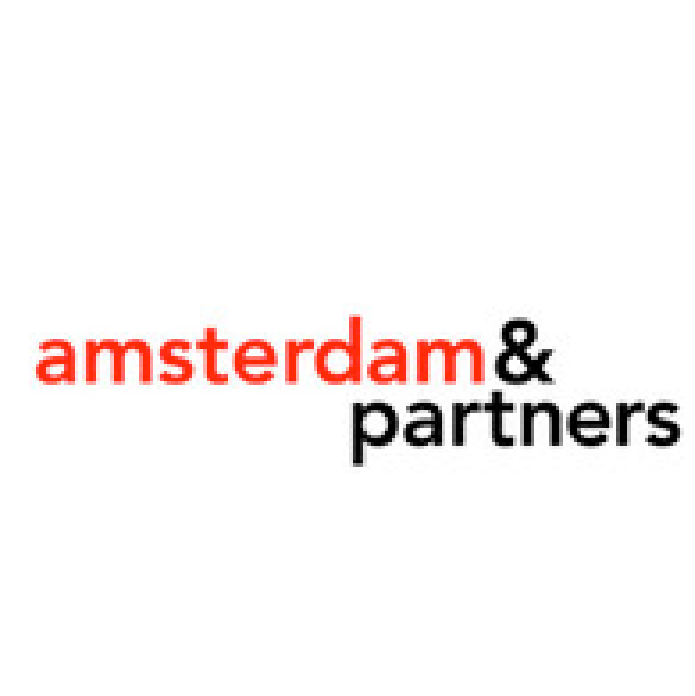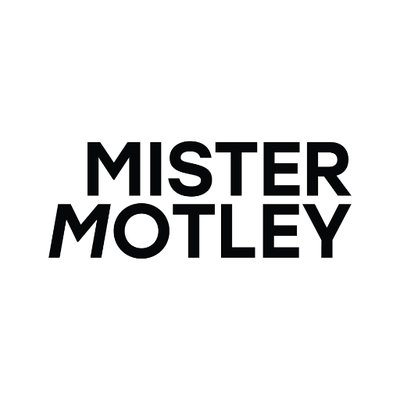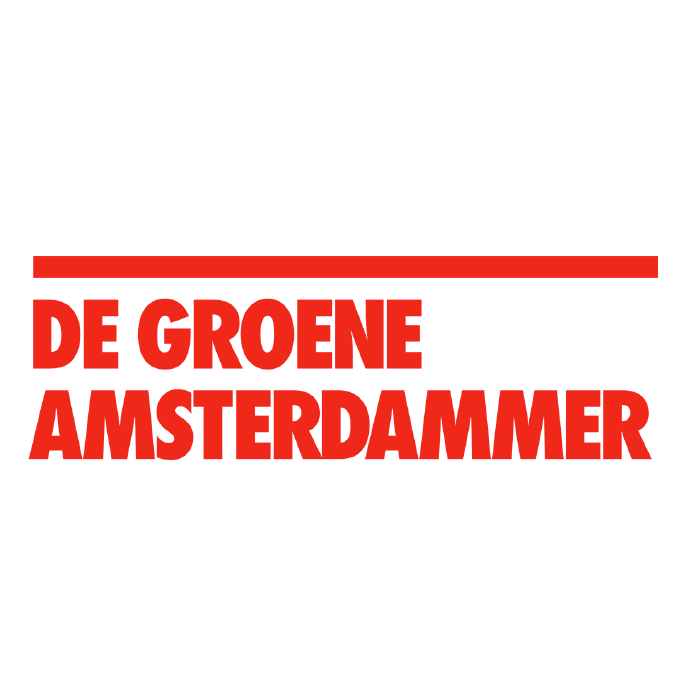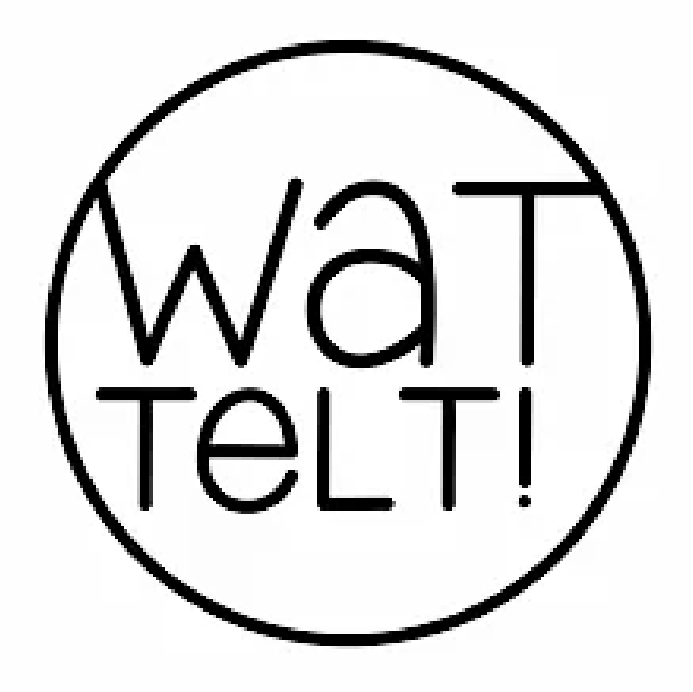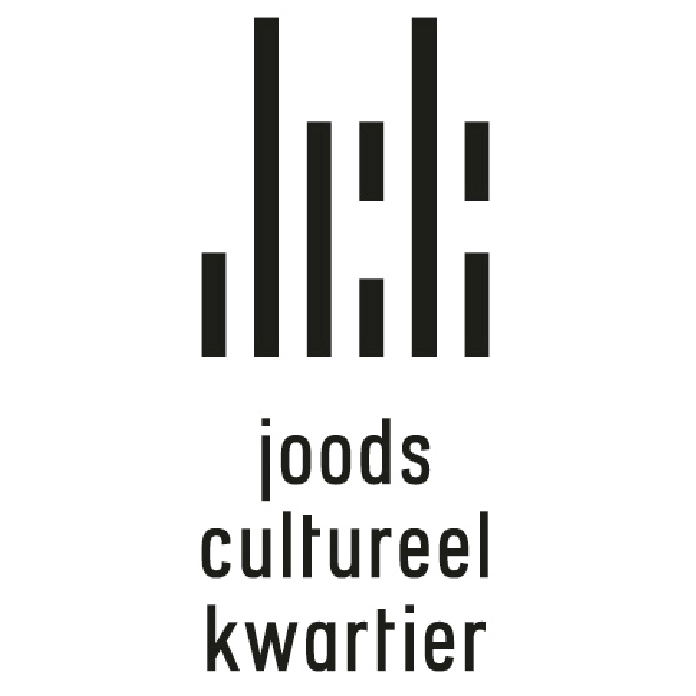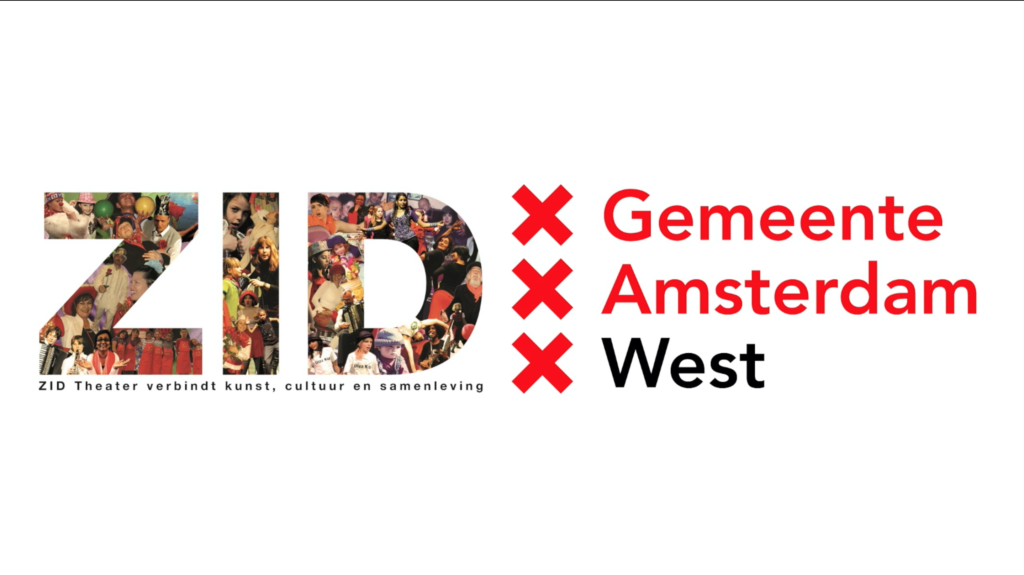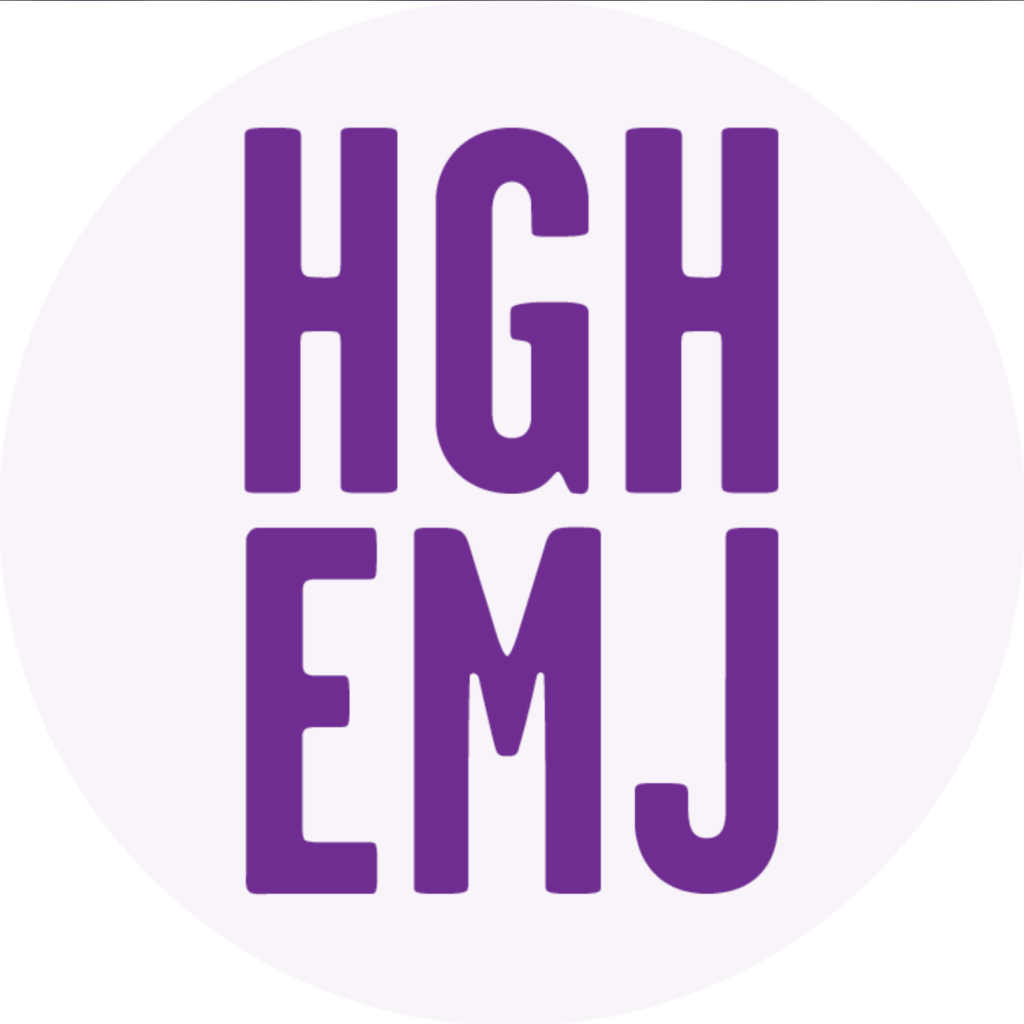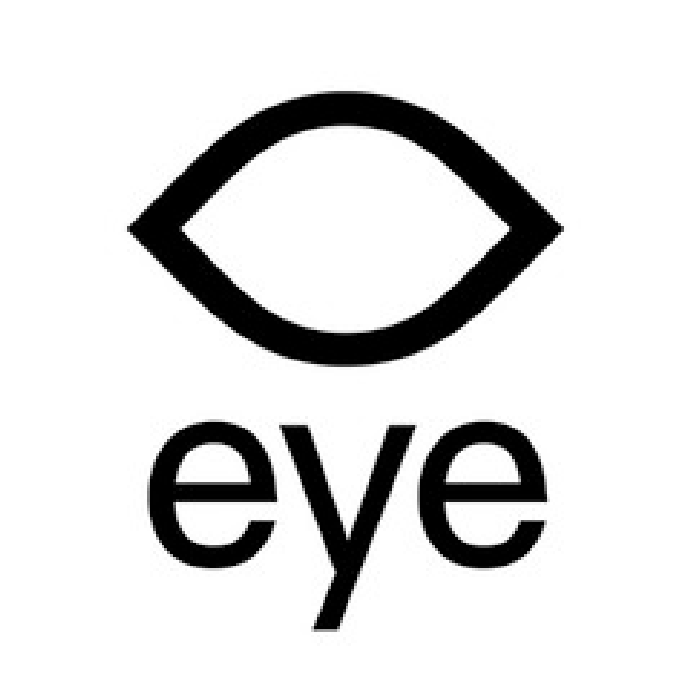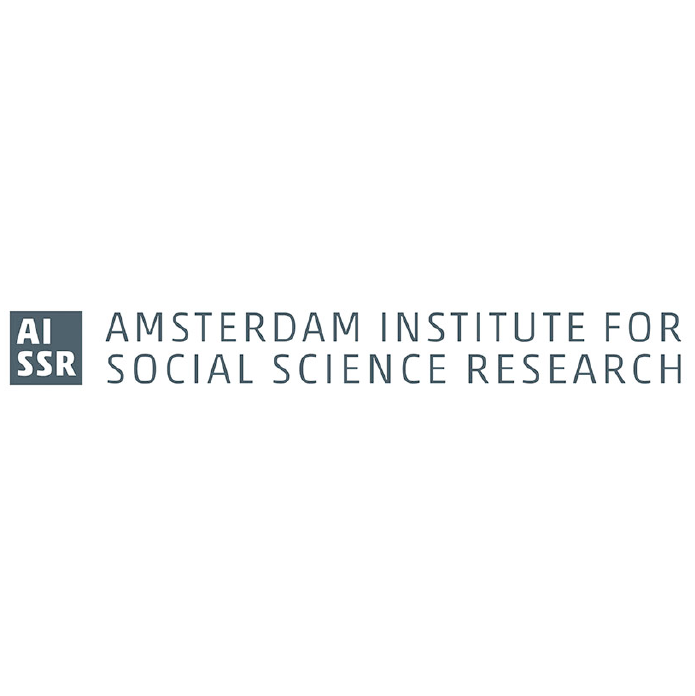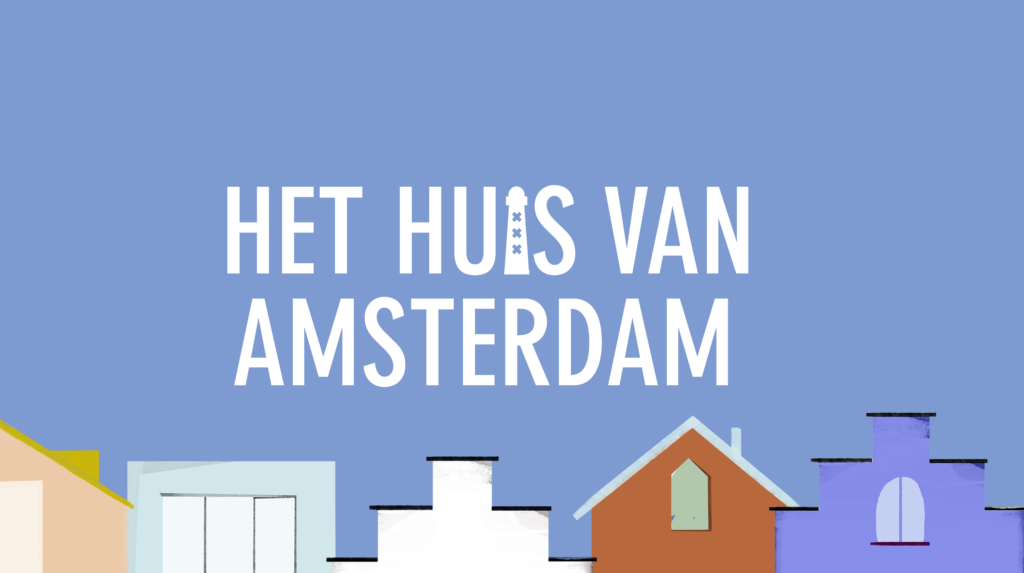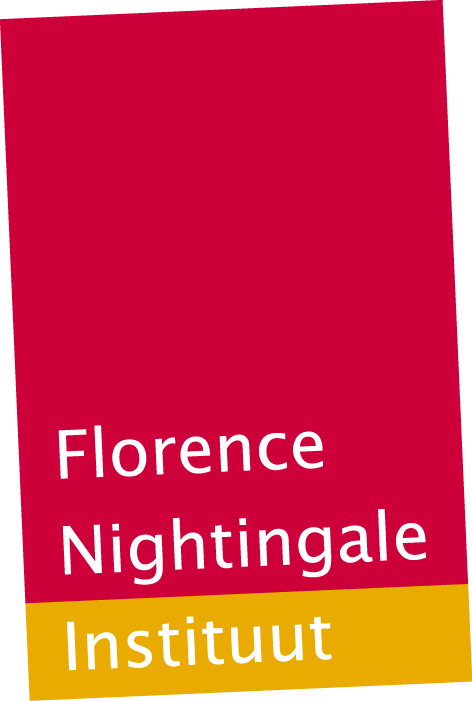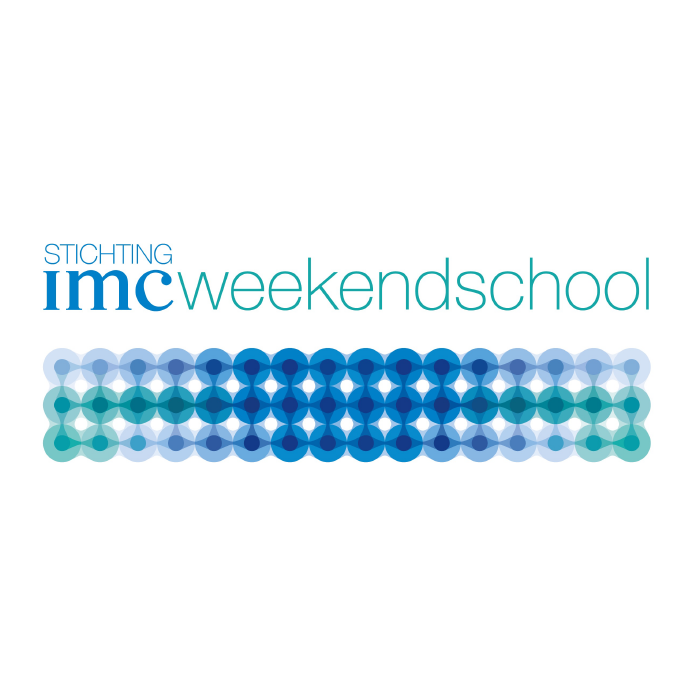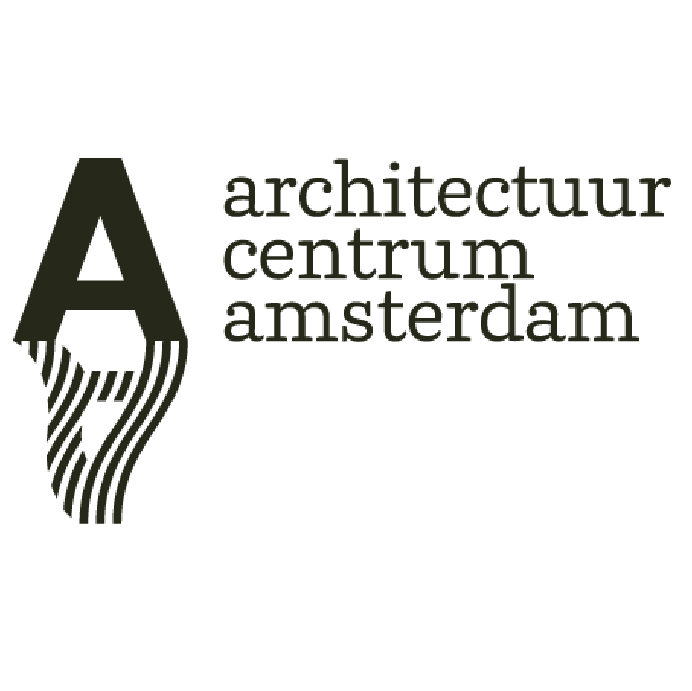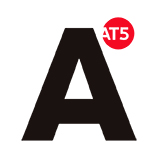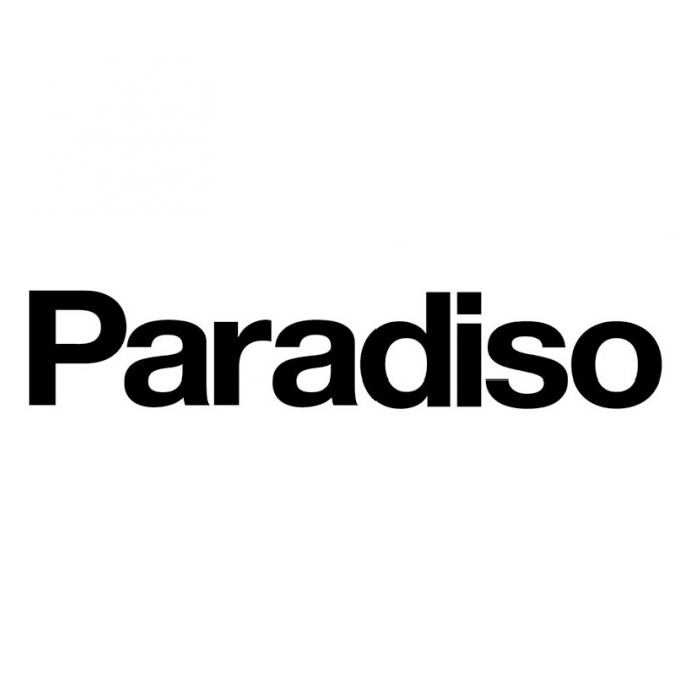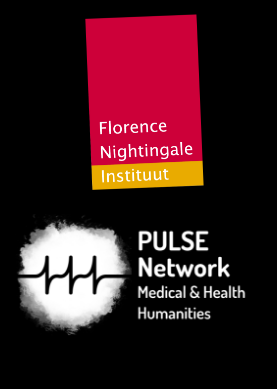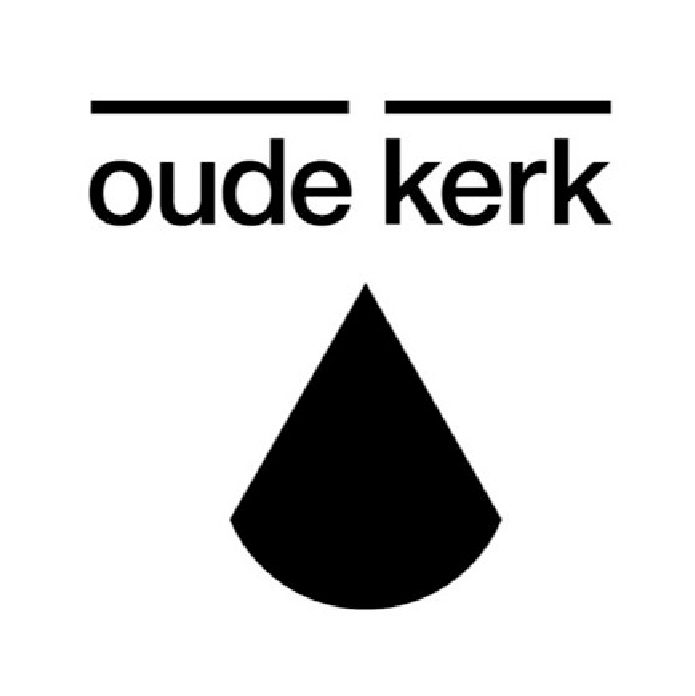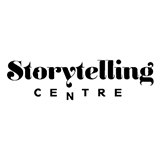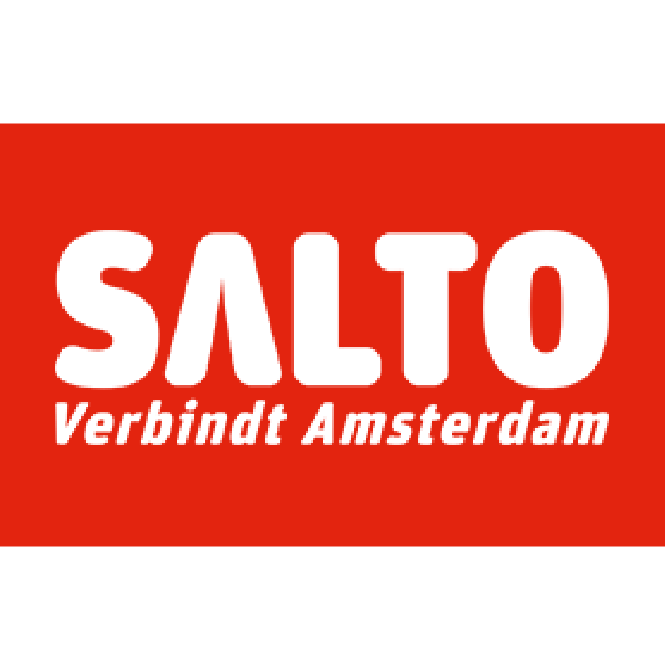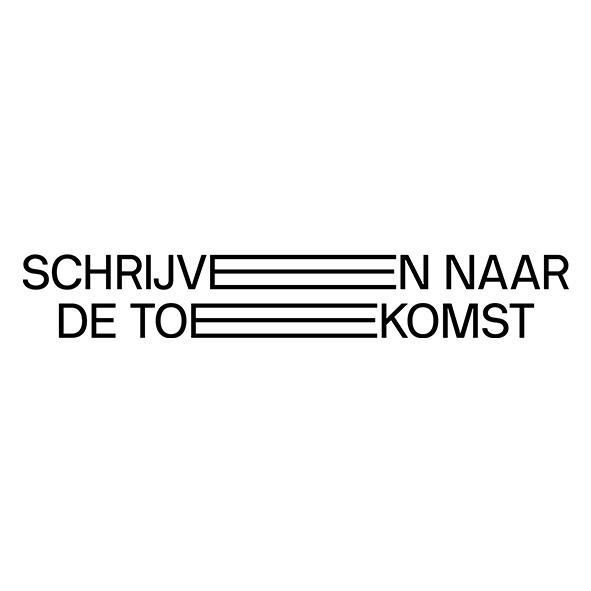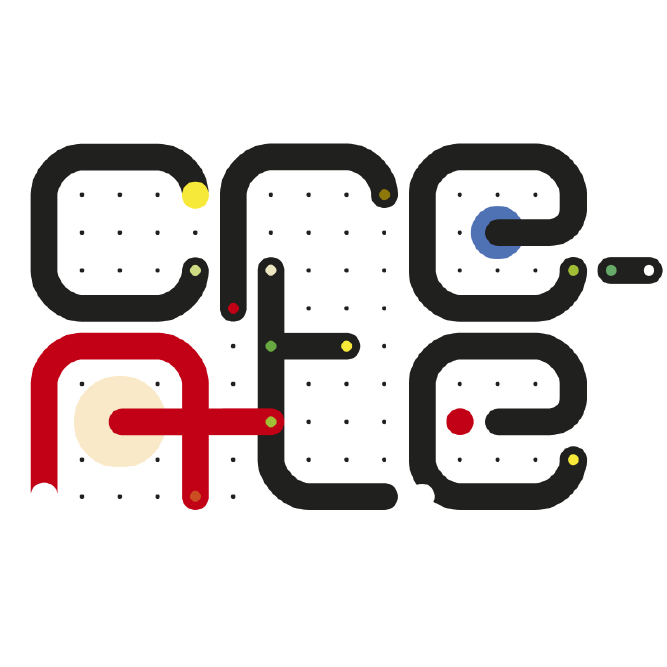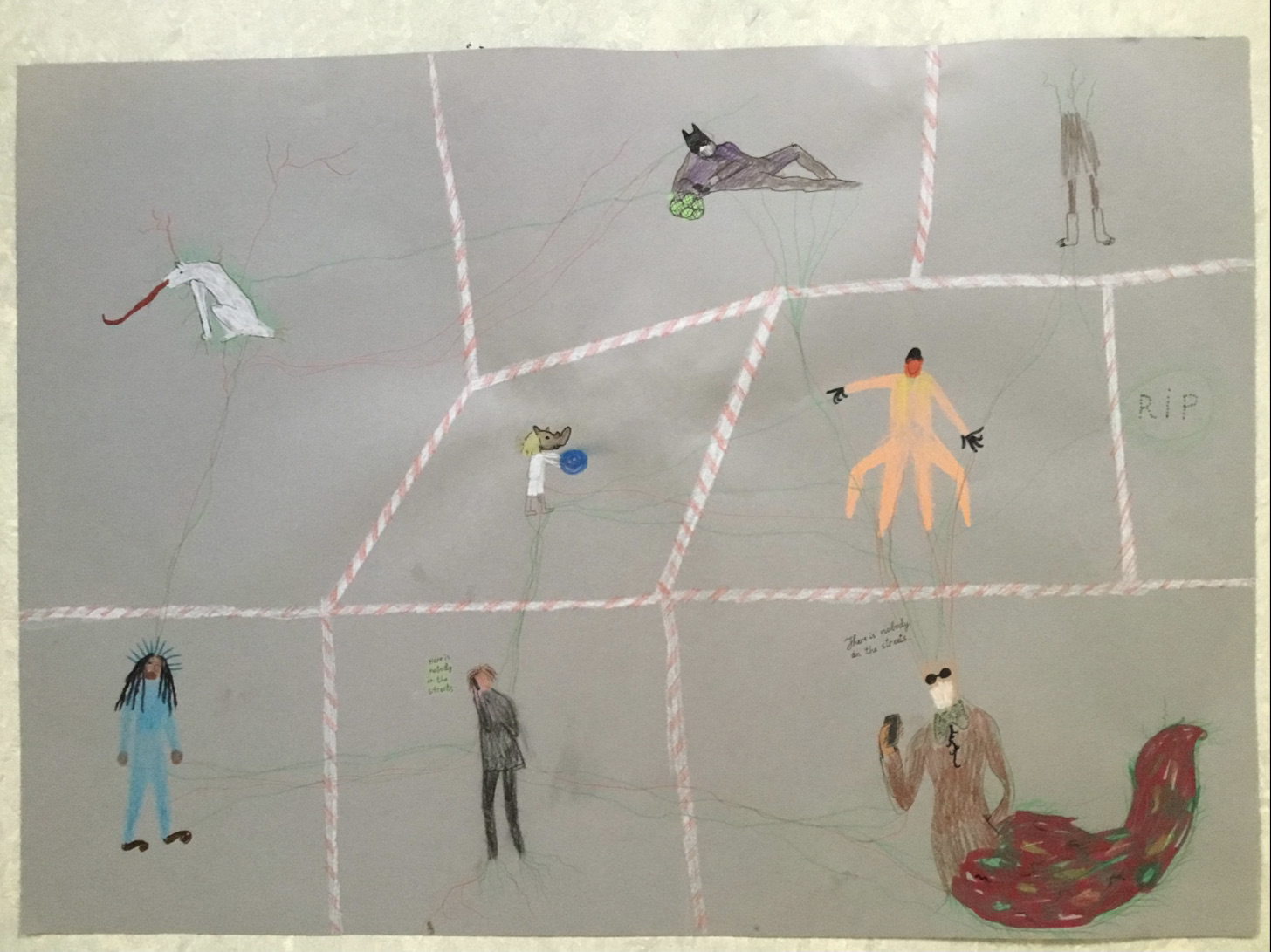
EAR and BREATH
At the request of the Amsterdam Museum, writer and curator Hanne Hagenaars spent a week scrolling around Corona in the City. As she explored the motley and multicoloured collection, she encountered remarkable stories, poems and works of art. Here she reports on a reality that frequently moved her, and sometimes caused some misgivings.
During the pandemic, Afra Eisma prepared her exhibition which was to open in the Fries Museum on 25 March 2021: Your silence will not protect you [1]. The first gallery is dominated by anger, a carpet that growls at us like a dog of war, ceramic faces contorted in fury scream at us, while their snake arms become entangled. On the other side of the same wall is the love room, where ceramic ears listen to the anger; for to love also means to listen.
The online exhibition Corona in the City is like one big listening ear for the residents of Amsterdam. The exhibition throbs with emotion and stories. Corona in the City shows our dear city at its best: what I encounter here is a very caring Family of Man [2].
Look, there’s OmiCoromi wearing a self-made necklace of oranges cut in half on a pink dress. You can see she wouldn’t hurt a fly. And there’s Janne, working with volunteers to make over 9000 face masks.
OmiCoromi
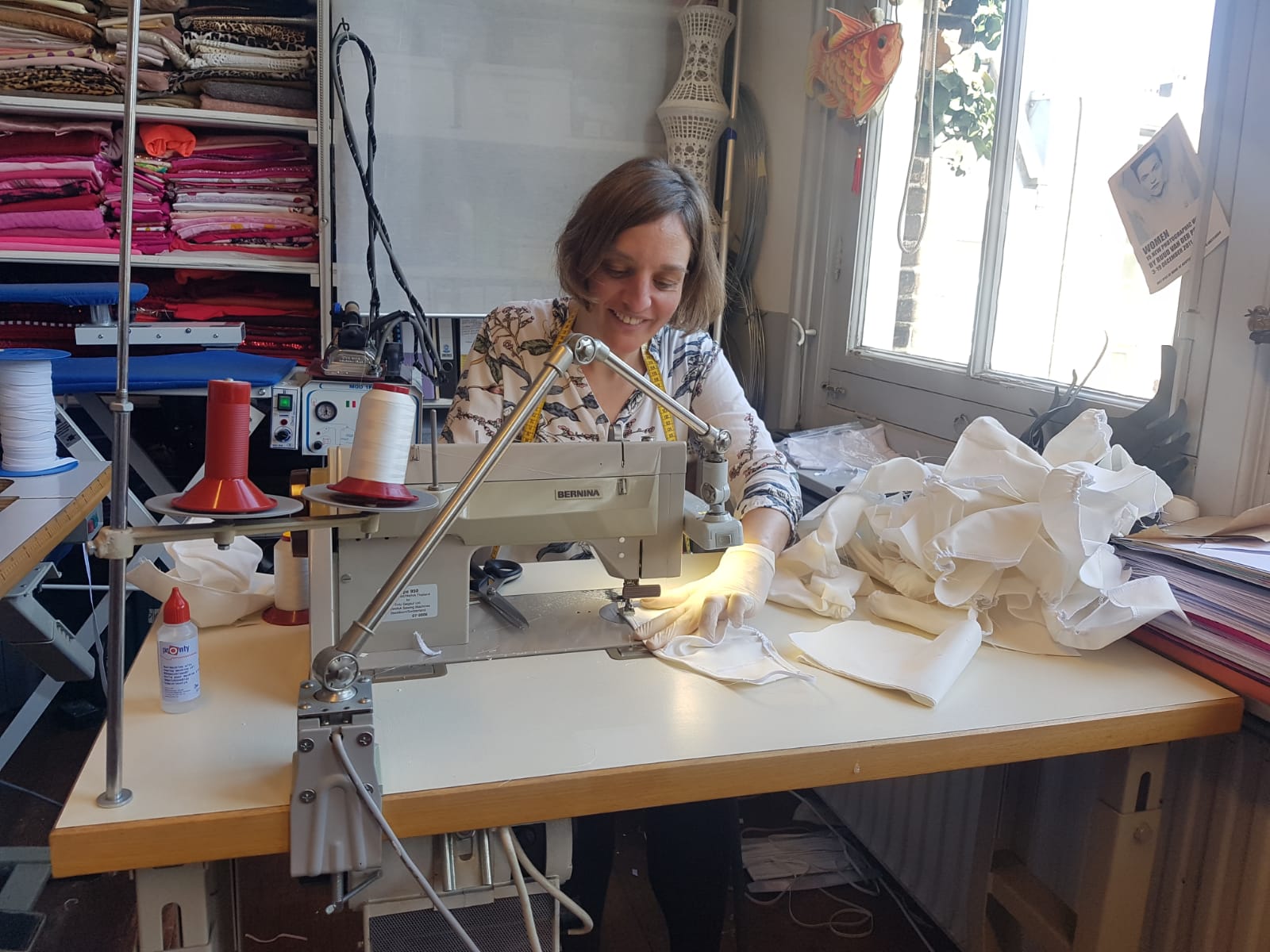
Janne worked with volunteers to make thousands of face masks
But anger does need that listening ear, otherwise whatever the angry person says simply tumbles into a deep and deaf hole. Which turns anger into a raging sense of impotence and frustration, and perhaps a great big knife. Turn up the volume!! Even bigger ears. Good thing a face mask doesn’t get in the way of listening. (Although hearing-impaired Amsterdam shows how face masks rule out the possibility of lipreading, and that the 1.5 metre social distancing coincides with the range of a hearing aid.)
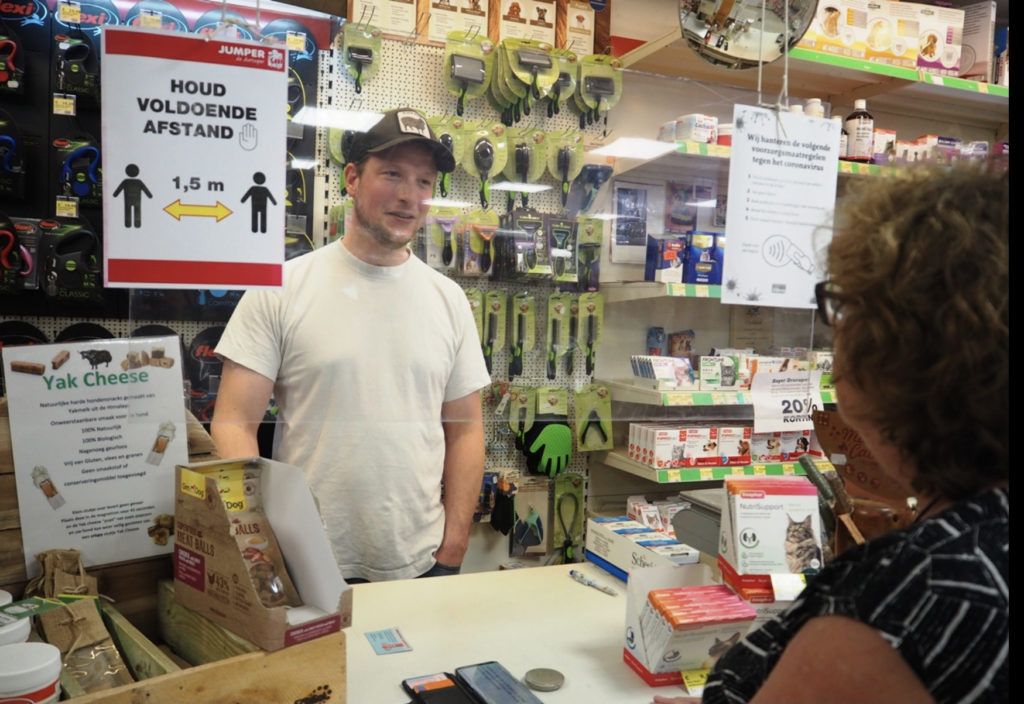
Marja de Kinderen, Slechthorend Amsterdam
‘The eye takes a person into the world; the ear brings the world into a human being.’ -Lorenz Oken [3]
The first lockdown was intelligent and exciting; everyone stayed home and made the best of it. Perhaps the pandemic was a gift from heaven or the cosmos, as an opportunity to rediscover ourselves in this drawn-out experience of time:
Our lives have been put on hold
So that we can catch our breath.
Perhaps that’s the most beautiful thing about it.
That quarantines don’t really exist,
but were dreamt up so that we can read.
That you read to forget yourself.
That a Sunday afternoon can last a whole week,
while every second counts anyway.
That we are vulnerable,
which is what makes us strong.
Gershwin Bonevacia
Yuval Harari points out that humans have developed powers that put us on a par with the gods. He passionately calls on us to start behaving as responsible gods, but in order to do so, we need to understand ourselves. Which isn’t easy, but still we have to try. And even more importantly, Harari says: we need to understand our darker sides, so that these do not prevail. We must be careful not to start believing in a story about ourselves that isn’t true and that encourages self-centred or indifferent behaviour.[4]
Love after love
The time will come
when, with elation,
you will greet yourself arriving
at your own door, in your own mirror,
and each will smile at the other’s welcome.
Noraly Beyer leest Derek Walcott voor
As the world shrinks, our observation intensifies; that seems to be message of the plastic containers drawn by Cleo Campert in clear straightforward lines. ‘Dear friends brought me groceries and food during the time I spent at home alone, with COVID. Each time I opened a container of food, I was touched by the love and care that had gone into it.’ We now follow the growth of a plant per day, even per hour. There’s something reassuring about the way the days repeat themselves. Every day the same walk, the repertoire of stretching exercises, and every day another documentary to watch. I order a vegetarian cookbook and take up cooking. There’s actually so much to do and to experience within the limited space of my own home, and the 15-inch screen of my computer.
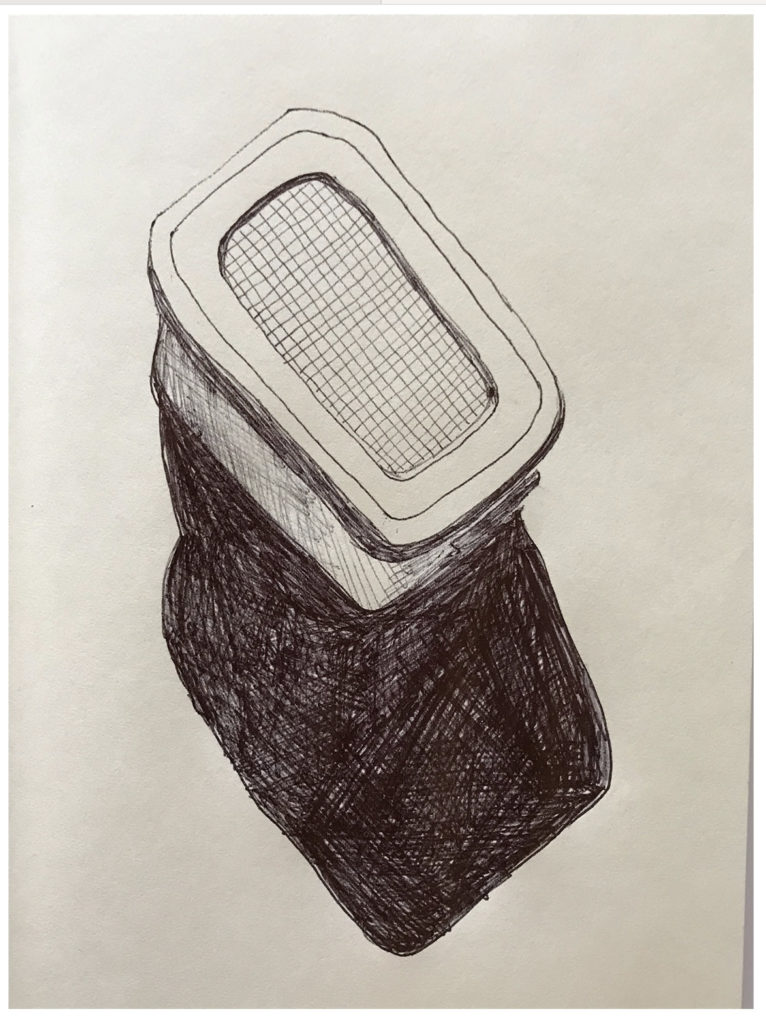
Cleo Campert, Bakjes
The first lockdown triggered widespread hope of a better world. The air in Amsterdam and the water in Venice were cleaner than ever. Yair Callender offers a step-by-step demonstration of how to fold an origami crane. The accompanying song, Minha Galera by Manu Chao, names everything for which the singer feels grateful. Yair also describes the ambiguity of the situation: ‘In fact I also see much beauty in this isolation. It reminds me of a monastic retreat, or any period of withdrawal and reflection.’ The human role in the world has been put on hold, which does wonders for the world of nature.
Yair Callender, the world after #3
But on the other hand, there is the fear and there are the deaths. The loneliness of many as expressed by auntie Dientje: ’I get up in the morning with my mouth shut, and I go to bed at night with my mouth shut.’
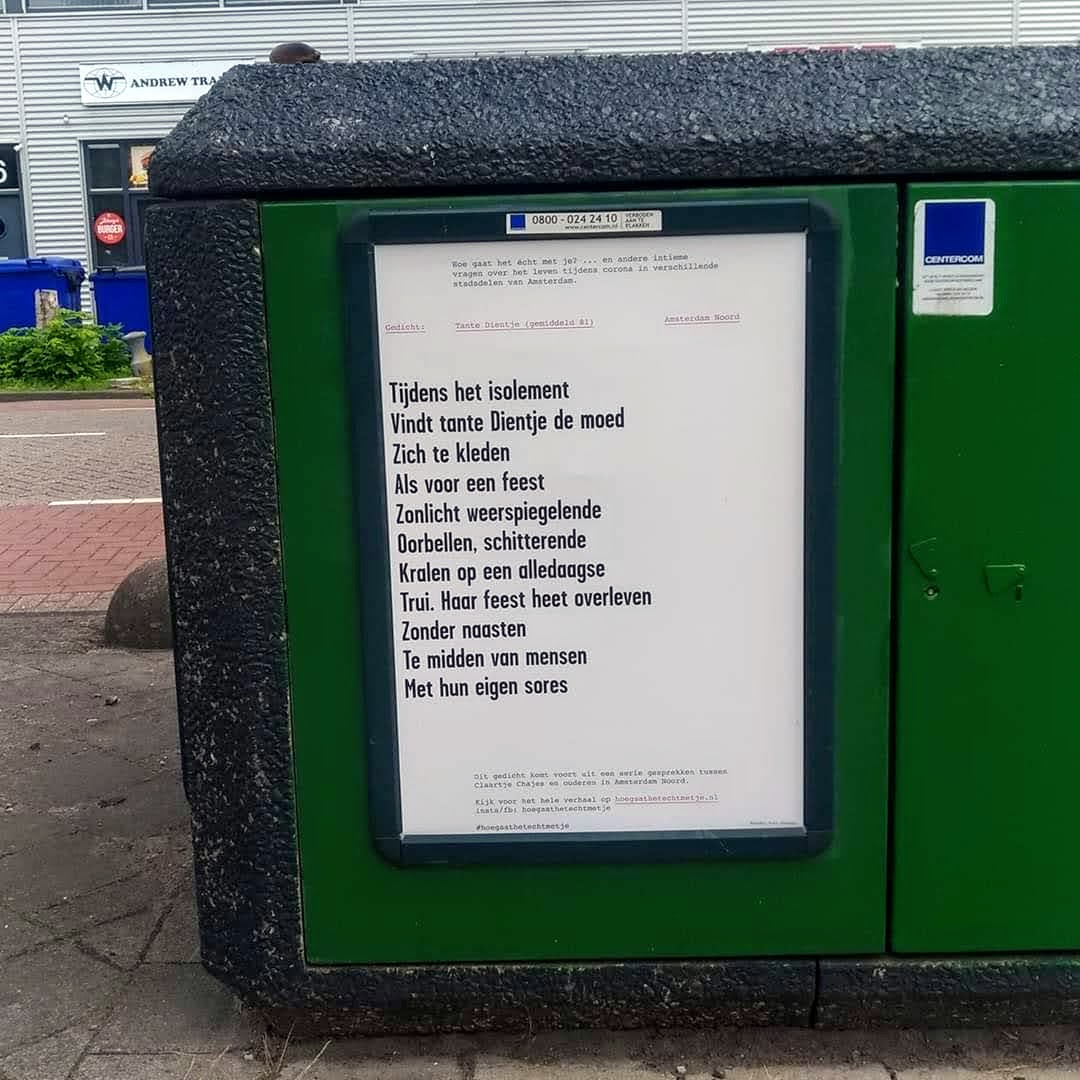
#Hoegaathetechtmetje
The distressing situation of a friend of Gluklya’s: ‘He told me that his studio has no ventilation and during the lockdown he is especially struggling with the absence of air. During the day he keeps climbing the ladder to the window to put his head out to .’ Schools are shut and teaching at home is quite a challenge too, but Corona in the City always offers an optimistic word, always a silver lining, which is comforting. Always.
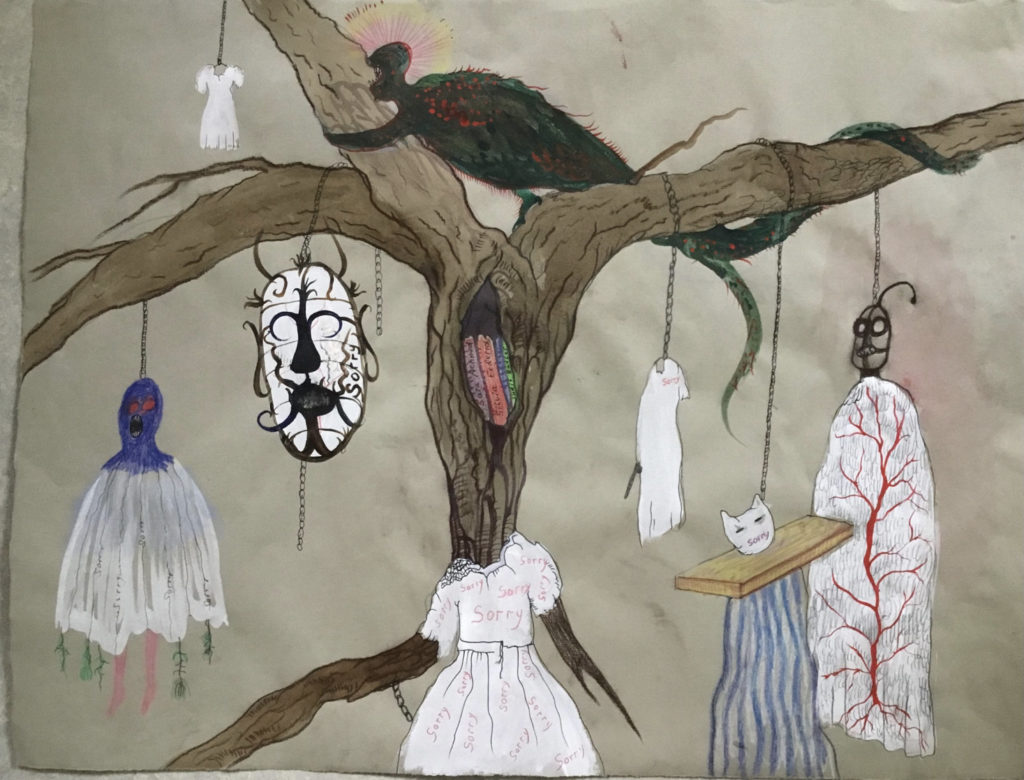
Gluklya, Corona Diary, Tree of punishment, 2020
The Corona in the City online exhibition is my hope for journalism. To not always focus on the doom scenarios, to not immediately seek to dramatise life and to endlessly keep repeating that. But instead to create breathing space for people’s goodness.
‘I want to thank you all’, says Sarah van Sonsbeeck.
‘In 2017 I made an exhibition called We may all have come on different ships, but we’re in the same boat now. Some liked it, some hated it. I want to thank you all. Sometimes it is hard to hear what other people say about your art but art is all of those people, art is polemics.’
I want to thank you all, that’s it. Everyone, including those for and against, the pessimists, the wishful thinkers, the depressed and lonely people thinking at home. All the thinkers who are trying to make sense of the condition of the world. ‘Are these measures the best of all options?’ It’s a question that deserves to be asked. [5]
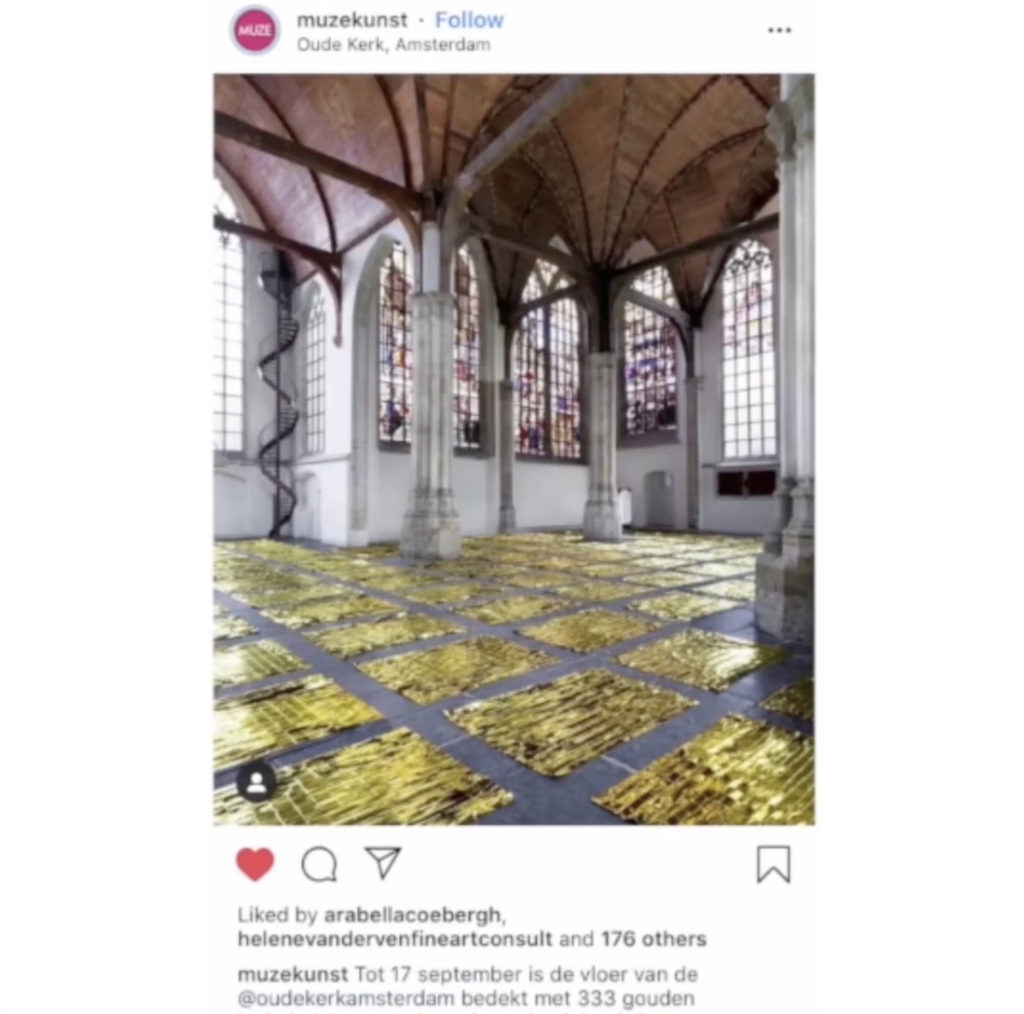
Sarah van Sonsbeeck, Against what do we need to protect ourselves?, 2020
Never before did I sense so strongly the power of the state; for example when I had forgotten the 9 o’clock curfew and had to dart through back alleys to get home, without being fined. (Limiting visits to one person and the curfew together achieve a 10% reduction in the number of infections, according to the Outbreak Management Team.)
Oh ear, hear
-Lucebert
But the anger, where’s the anger?
Local media company AT5 devoted some attention to how young people in Amsterdam-West feel about the curfew. ‘We’re against it,’ they say; . ‘We all need to stay healthy,’ says the last in line to be interviewed. The continually chanted rabble rabble rabble by politicians – who simply skip the listening part – is absent here. Can we give them a little cheat sheet on behalf of this family? ‘Young residents of Amsterdam, we understand your frustration, you miss going to school, perhaps you’re having to spend your days crammed into a dwelling that’s much too small for the whole family. You can’t vent your energy in the gym, can’t take out your frustration on a punch ball. It’s not OK to go breaking things, but we hear your anger. Come to the prime minister’s office and we’ll have a good talk about what we can do for you.’ , politicians! Empathise with young people who take to the streets in frustration, and at the same empathise with the neighbourhood residents who’ve had enough with the rioting on their doorstep.
What these people miss is the additional bit of space that others do have. ‘Though architecturally separated from my body, my studio functions as a physical extension of my inner body, a room to breathe.’
AT5, Youth workers concerned about impending curfew
But the most heart-breaking expression of the desperate need for air was indisputably that of the Black American George Floyd, pinned to the ground by a policeman’s knee on his neck. Until he died. His gasping cry, ‘I can’t breathe’, resonated around the world; also in the in Amsterdam. The anger resounded around am Square and was echoed in the letter of gratitude to mayor Femke Halsema: ‘The demonstration and your presence there moreover acknowledged the fatal victims of the pandemic that is institutional racism. And this pandemic remains widespread.’
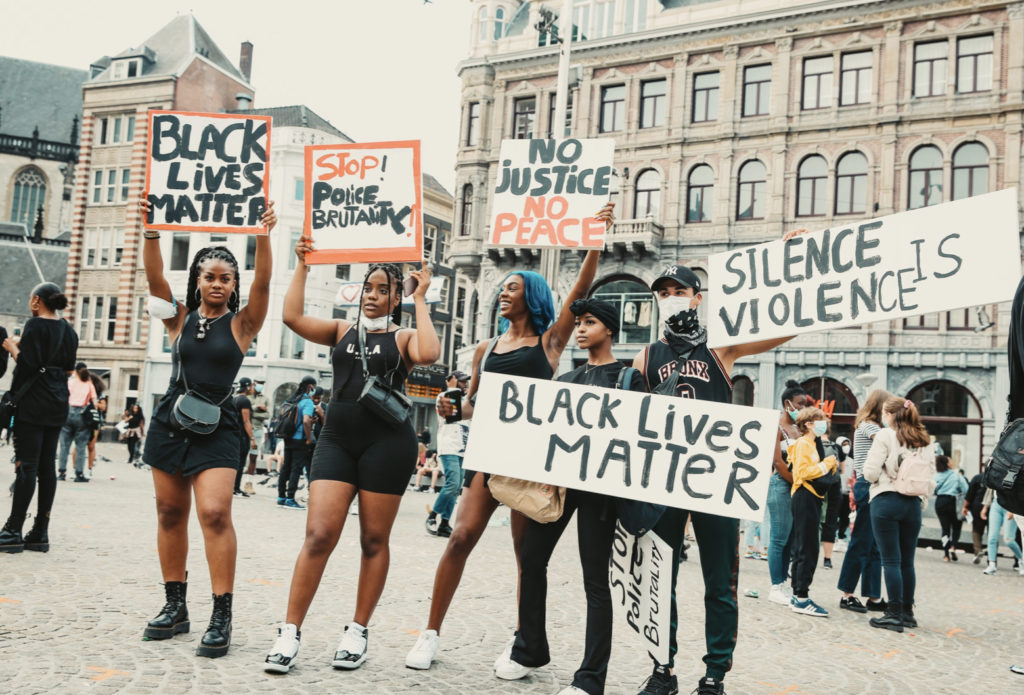
Luciano de Boterman, Black Lives Matter protest Dam, June 1 2020
The second, ‘strict’ or ‘hard’ lockdown panned out differently. It was as if the gap between the rules and the human capacity to live in isolation, or to live with too many in cramped conditions, or to remain hopeful that your business venture could survive the pandemic, became too wide. The desire to make one’s own decisions grew and grew and grew; just like the demonstrations that were countered with water cannons and police dogs.
AT5, Corona protests get out of hand
Protecting the vulnerable, even if it means they must kiss their granddaughter through a glass wall. Demented elderly, who must suddenly do without visitors. What would these vulnerable people prefer, personally? The vulnerable people within my own circle – elderly friends with weak lungs or other underlying complaints, remain in self-imposed quarantine. They rarely leave the house and visit the supermarket in the early morning. Is the entire country quarantined while they protect themselves?
One evening I stand out on my small balcony, looking at the stars and contemplating my role in the universe. Somewhere else in the city, Ndede Assiam is likewise contemplating the infinity of the cosmos.
‘Celestial bodies give me hope. See, the earth revolves around its axis. And the earth rotates around the sun. And the sun in turn moves through the Milky Way. Everything forms a cycle. Everything turns and will continue to turn. Everything will recover, no matter how bad things get. As long as things keep turning, there is reason to hope. As Stephen Hawking said: ‘Remember to look up at the stars and not at your feet.’
The story of Ndede Assiam
But then, one day: snowfall. Ethereal snow that even resists being made into a snowball. As if the city was suffering famine, until white bread came falling from the sky. Pure and simple snow, bringing a profound sense of happiness. Yasser Abarkach drew a young boy, breathing in deeply. ‘The snow smells like the future’ is his caption.
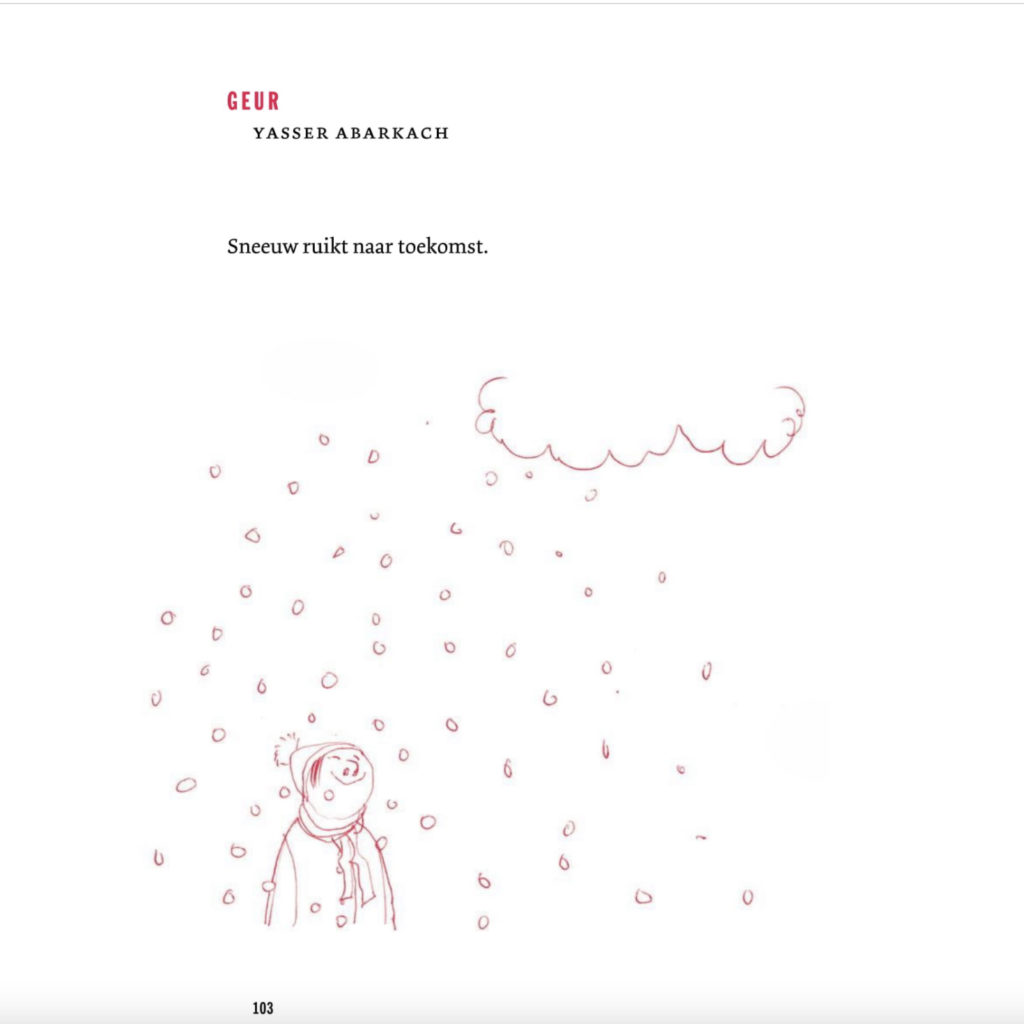
Yasser Abarkach, Geur, 2020
While we look up and feel the snow settling on our eyes and the white flakes melting on our tongue – while we deeply breathe in the future –
the NASA-rover Perseverance is about to take off for Mars. [6]
And then on 18 February 2021 it actually happens: the Perseverance lands safely in the Jezero crater, ready to start seeking signs of life. Back on earth we are treated to breath-taking images of Mars’s bumpy red surface. Astronomer Jeffrey Bout is eager to see what the NASA investigation on Mars will turn up. ‘There’s probably no life on Mars today. But once upon a time there may have been life, because we’ve found water on Mars. So it’s conceivable that bacteria lived there, billions of years ago. If this is found to be the case, then that would be revolutionary. For it would mean that we are not alone in the universe. After all, if there was life on Mars, then there’s bound to be life elsewhere as well.’ [7] The research voyages to Mars are geared to the future, with the idea that we can perhaps visit and colonise Mars.
Given all the climate alarms, I am more inclined to think that planet Earth could wind up like Mars, and that one day, in a very distant future, scientists may cautiously arrive at the conclusion that there once was life on this planet. For we have found some water.
As the poet Gershwin Bonevacia says, ‘we live in a world that will also continue without a world.’
‘Are we still able to bow for what transcends us?’ is what artist Hans van Houwelingen wonders. He fittingly named his film Spoetnik, after the satellite that Russia launched in orbit around the earth, long before the Russians launched their Sputnik corona vaccine.
Hans van Houwelingen, Are we still able to bow for what transcends us?
On an infinite snowy expanse, helicopters are parked in a tight formation. Suspended from a parachute, a capsule drifts to the ground. The lid is twisted open and an astronaut is lifted out and carried off. He can finally remove his space helmet. We hear the astronauts coughing inside the cramped capsule. The next scene shows a helicopter landing outside a hospital, while a typical COVID victim – an overweight elderly male — is visible . A transparent helmet is fitted over his head and oxygen tubes are connected, as a classy alternative to the tubes that are otherwise fed through the nostrils and down to one’s lungs. What is and what isn’t true in what we see?
Is there room for doubt? What are facts, anyway? As put it: ‘The highest is to understand that all fact is really theory,
Or, as says: ‘Facts are not a direct reflection of ‘the’ true world. They are the end product of human arguments and decisions.’ ‘No scientific discipline should therefore immunise its statements against counterstatements by pretending that science speaks on behalf of reality.’[8]
My neighbour received a letter inviting him for an AstraZeneca jab (thank god, finally!), prompting him to ask whether the vaccine is safe. In response het got a rather vague argument without a real answer, ‘we are researching it’. ‘Well how does that help me?’, he grumbled. ‘I would like a clear Yes or a No.’
But that’s precisely the problem; it’s asking for a kind of certainty that medical science cannot provide. Reality is much more fluid than we assumed for so long; at times we can see it change before our eyes.
During the lockdown we became more aware than ever before of the difference between the reality of the computer screen and that of nature. While we communicated via the screen and paid virtual visits to museums, we also took up going for strolls, in massive numbers. We developed an urgent desire for exposure to nature: fresh air, bird song, or coming face to face with a fox.
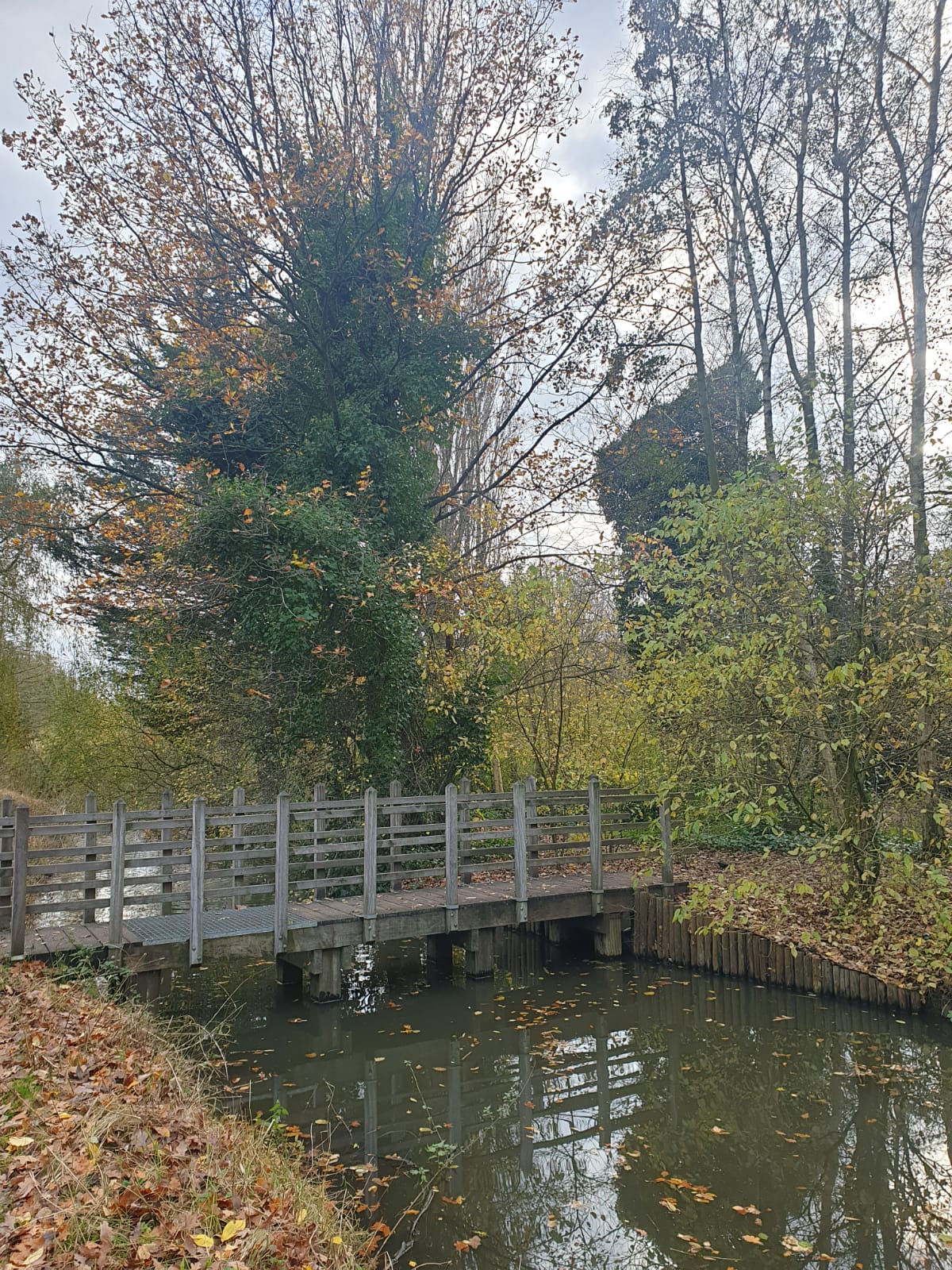
’I used to spend a lot of time looking at birds; that’s to say, looking them up on the internet and then drawing them. It became one of my favourite pages in my Polderpolonaise book. I’m a bit ashamed to admit that so many of the birds I studied “so extensively” back then, I’m only seeing in the real world now,’ says illustrator Merel Corduwener.
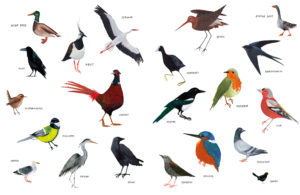
Merel Corduwener, Give the city birds a name
In between the lines, Corona in the City reveals that public health means more than the number of COVID infections, or even the number of dead. The exhibition presents the stories of very many people, in which turn out to be a recurrent theme. And that’s comforting. Perhaps the corona pandemic has helped us to find and to be our better self. The exhibition is overflowing with insights, accounts of personal transformations, and stories about giving or receiving help.
We live in a world inundated by opinions, and it’s good to remember that these are all essentially stories. This adds a bit of air to our bubble, a bit more breathing space – as vital to our survival as those oxygen tubes. All these stories together: that’s us, and that’s life.
Postscript
My father is no longer alive, and this happened several decades ago, but it’s something I still think about from time to time. Completely out of the blue, one day he simply collapsed and fell to the ground. Because his wife heard him fall and immediately called the emergency number, the ambulance arrived at the doorstep very swiftly. It turned out to be a light heart attack, and he soon recovered. But from then on he couldn’t bear it if his wife went out without saying so; for imagine it happened again, without anyone around to help?
I wondered how much you can demand of another person to preserve your own life.
Hanne Hagenaars
This article was translated by Jan Warndorff (BeterEngels)
[1]‘Your silence will not protect you’ is the title of a book by the Caribbean-American author Audre Lorde. She described herself as black, lesbian, a mother, a fighter and a poet, and expressed this through her work. She wrote her books for black (queer) women, and every other reader is considered a guest. And that’s how Afra Eisma sees herself.
[2] The Family of Man is a photography exhibition, compiled in 1955 by MOMA director Edward Steichen. The exhibition is a manifesto for peace and the fundamental equality of all people. The exhibition as a whole was added to UNESCO’s Memory of the World Register.
[3] Joachim-Ernst Berendt, The Third Ear. On listening to the world, 1988.
[4] Interview Yuval Harari: “Humans are already gods” | Terzake, 28 January 2020
[5] For instance Ewald Engelen who wrote the book Ontwaak! and was interviewed about this by Yoeri Albrecht in the series De open samenleving organised by De Balie cultural centre, Amsterdam.
[6] https://www.tijd.be/ondernemen/algemeen/waarom-we-absoluut-naar-mars-moeten/9815442.html
[7] https://www.rtvnoord.nl/nieuws/790654/Sterrenkundige-kijkt-uit-naar-landing-NASA-rover-op-Mars
[8] Trudy Dehue: https://trudydehue.nl/wp-content/uploads/2020/02/dehue-onbesuisde-popularisering-in-de-groene-amsterdammer-5-2016.pdf
The author wishes to thank Gijs Frieling for his input.

